Potty training your french bulldog puppy is not a complex process, whether you’re training an adult frenchie or french bulldog puppies it all works the same.
Luckily french bulldog potty training isn’t all that different to any other kind of training. The premise behind toilet training is simple, the problem is that Frenchies aren’t typically a clean breed, and can be quite the pain to toilet train, so they will need a chunk of extra effort, patience and reinforcement.
Before we begin though, there’s a few things that need to be put in place and be generally understood before we begin potty training…
Rules Of Potty Training
1 – We Don’t Punish.
The most important thing in amongst all of these methods is no matter how frustrated we get, we should never punish our dogs for making an error. Normally, errors happen because of human misunderstandings or mistakes, a lapse in the regular schedule, a mistake it too long time, or not watching our puppy. If it is puppies fault? Then it’s almost certainly medical. Remember to take a deep breath, you will get there with consistency.
Punishment will just teach them not to go to the bathroom in that specific area or when you’re not home…
2 – Puppy Goes Out Every Time They….
Eat, wake up, after they play, after they drink.
These are the best time to take your puppy out, as these are the times that potty breaks are the most likely for puppies. It may vary for your adult french bulldog, as usually they have learned a few tricks along the way about holding their bladder.
3 – We Reward Every Successful Mission
You can sing, you can dance, you can pull out some awesome treats, or a super fun play thing, but you absolutely must reward your dog for doing it right. Because when we set up for success, every toilet opportunity is just another opportunity to make going to the bathroom in the correct place the most rewarding experience for your dog.
Frenchies are … fun.
The first thing you need to know is that it’s not going to be easy. French Bulldogs are typically full of personality, and aren’t the fastest learners.
It’s quite common for frenchie dog owners to feel like their dog will do whatever they can not to go outside.
But their strong personality is one of the reasons that you got a frenchie, right? So if you’re looking for an obedient, easy trained dog breed, look elsewhere! Even though these dogs can be difficult at times, once trained properly and with lots of patience from both owner and dog–they make wonderful pets!
The only correct way I’ve found is using positive reinforcement techniques by rewarding good behavior with treats or praise (this can also include toys).
Okay, now that’s done, the first thing you have to do? Is pick a potty training process! There are currently three main processes, and I want to discuss them all a little for you!
Pick A Method
There are three methods of potty training
1 – With A Crate
2 – Without A Crate
3 – With A Potty Pad
Note: You may be asking “But Ali! What about potty bells?” I’m going to say you’re not going to use them, because they are not the best way of training, and they encourage dog parents to ignore the warning signs and that breeds frustration for doggy parents.
These all have their pros and their cons. My preferred method? Is either with a crate or without a crate, because you couldn’t pay me to use puppy pads with my dogs! It creates a whole new level of training and adds in a lot of confusion – which is never a good idea.
So, here’s a quick how to train each of these!
- Safe space from home ongoings,
- Secure travel,
- Less stressful when in vets/groomers,
- Useful for housetraining,
- Useful for confining, esp. in open plan homes,
- Transferable skillset,
- Conditions a 'calm zone',
- Creates an 'air lock' for escape artists/door dashers,
- Management in multidog homes,
- Recovery from illness/injury/surgery,
- Emergency rescue of dogs requires them to be crated,
- Prevents scavenging at home.
- Manages destructive behaviors
- Can be stressful,
- Can make separation anxiety worse,
- Can be an intrusion on your home,
- Not strictly necessary to complete any of the pros raised.
1 – How To Toilet Training Via Crate Training
The first step to this method of potty training a French Bulldog is getting them used to the crate.
A crate can be used as a safe place for your dog when you’re out of the house, but it also helps with potty training because it gives them some privacy and keeps them from making messes in other areas of your home.
Crate Size: The size of the crate will depend on the age and size of your French Bulldog. As a general rule of thumb, look for one that’s has enough room for him/her to comfortably stand up in (with headroom), turn around freely inside, lie down stretched out with paws touching each end wall without having his/her head bump into either side wall or having too much room so that he feels trapped inside his new home!
The idea here (at this stage) is that they have plenty of space to be them, but, they don’t have too much room that they feel they can go to the bathroom.
Room Location: It’s best if you put this crate in an area where there are lots of people activity going on–like near family rooms or kitchens–so he gets used to being around lots people while still being able to feel secure enough inside his own private space within reachable distance if needed e.g. beside a bed (when our dogs or puppies come home first, they tend not feel comfortable sleeping alone).

- Newly enhanced with added security features to keep your pet safe | slide-bolt door latches now feat
- Life stages double door dog crate measures 36l x 23 x 25 inches and is suitable for intermediate dog
- Dog crate includes a divider panel, durable & leak-proof plastic pan, protective rubber feet, carryi
- Easy to assemble & portable | dog crate sets up in seconds with no tools required and conveniently f
- Durable & strong, quality construction creates a secure place for your dog to fulfill their natural
- Please note: midwest homes for pets manufactures the icrate & life stages dog crates. life stages cr

- Quality materials: revol is made with durable, high-grade aluminum, steel mesh wire and reinforced p
- Washable & durable: the tear and water-resistant snooz cover comes off easily to wash after an accid
- Pet safety: the unique, diamond-shaped mesh pattern and solid, single-piece frame helps prevent inju
- Travel friendly: revol is collapsible, transportable, equipped with a carrying handle and wheels, an
- Internal dimensions: 25l x 19h x 17w

- Elegant way to house your pet while disguising the pet crate as a fashionable piece of furniture that can double as an end table
- Made of ECOFLEX, a non-toxic recycled plastic-wood polymer composite material that won't warp, crack or split
- Spindles made of stainless steel tubing and a stainless steel latch; double latches on large and x-large crates
- Easy, no-tools assembly
- For dogs up to 50 lbs
- Exterior Dimension: 29.5 in. L x 21.1 in. W x 25.2 in. H || Interior Dimension: 26.8 in. L x 17.7 in. W x 20.9 in. H
- Door Dimension: 13.8 in. W x 19 in. H
- Removable table top for easy cleaning. Requires no maintenance
- Crates can provide a safe secure hangout space for your dog. Best used for dogs that are crate trained and that do not have anxiety.
- ECOFLEX does not absorb moisture, therefore stains and odors are a thing of the past
Then we have to teach them to love their crate.
Simply put, this is done by showing them that their crate is the most fantastic place in the world, and, it can be exactly that. You just cannot rush it. If puppy is whining or uncomfortable, you’re moving too fast.
First we make the crate an awesome relaxing place to be, encourage them in there with treats and tasty chews, and a super comfy bed.
Then we begin closing the door and allowing our dog or puppy to adjust to the space and begin recognising it as theirs!
This process is covered more fully in How To Make Your Dog Love Their Crate.
If your lucky and had a good breeder, your breeder will have covered this training already.
Now We Train
Establish a routine, every time the eat or drink, each time they wake up and after they play are all times that we pop our dog on a leash and take them to the designated spots.
Every time you cannot watch your dog or puppy, or they’re going to sleep, they go to their crate. When they wake up? They go outside.
Then, whilst they’re awake, ensure that you’re watching them. If they’re awake, they’re a toilet risk, so ensure that they’re always in your eyesight (yes, always) and if you see them start making motions, common ones being excessive sniffing, and circling, it’s time to go out. Learning our dog’s body language in these moments is pivotal. Clip them on a leash and rush them outside.
Every time they go in the right spot? Praise and reward.
The idea is that we enable them and reward when your frenchie poops and pees where they should, and disable them from going elsewhere.
Then, ensure they go last thing at night!
Simply, we then repeat this each and every time until we have completed toilet training.You will decrease treats, and you may elect to change to something of lower value first, and then eventually phase out entirely when you’ve instilled good habits really well.
Note: Dogs should not be crated for a long period of time
You should keep them out as much as possible, especially if they start barking or whining. Frenchies are small dogs, and have a small bladder, so at younger ages, they will need to go to the toilet more often.
Frenchies do not tolerate being left in their crates for long. You should keep them out as much as possible, especially if they start barking or whining. If you are at work and cannot take your Frenchie out with you, try leaving him in his crate with some treats and toys so he has something fun to occupy himself with while you’re gone.
If your Frenchie does not go into his crate willingly, it may be necessary to manually guide him into the cage until he gets used to the idea of going there by himself (which shouldn’t take long).
Pro Tip!: Leave a small bag of delicious high value treats beside the door
How To Toilet Training Via Without A Crate
- Safe space from home ongoings,
- Useful for confining, esp. in open plan homes,
- Conditions a 'calm zone',
- Creates an 'air lock' for escape artists/door dashers,
- Management in multidog homes,
- Recovery from illness/injury/surgery,
- Prevents scavenging at home.
- Manages destructive behaviors
- Allows for natural movement and regulation
- Requires more observation
- Gives more room for mistakes
- Can be an intrusion on your home,
Pick a puppy proofed space, such as the kitchen, a bathroom, you may elect to use a play pen or a baby gate to create a more flexible or soft boundary. This restricted area just means he can only make so many errors.
Make this super comfy and cosy and place your puppy will love to be. Add his bed, his toys, and make it the home of all things soothing.
Every time you cannot watch your dog or puppy, or they’re going to sleep, they go to their puppy proofed safe space. When they wake up? They go outside.
Then, whilst they’re awake, ensure that you’re watching them. If they’re awake, they’re a toilet risk, so ensure that they’re always in your eyesight (yes, always) and if you see them start making motions, common ones being excessive sniffing, and circling, it’s time to go out. Learning our dog’s body language in these moments is pivotal. Clip them on leash and run (not walk!) outside!
Every time they go in the right spot? Praise and reward.
The idea is that we enable them and reward when your frenchie poops and pees where they should, and disable them from going elsewhere.
Then, ensure they go last thing at night!
Again, we then repeat this each and every time until we have completed toilet training.You will decrease treats, and you may elect to change to something of lower value first, and then eventually phase out entirely.

- - prevent danger before it occurs, secure the baby gate at the bottom and top of the stairs for max
- - sometimes, parents need to focus on other things. dog gates will keep your kids controlled insid
- - the baby gate can open and shut smoothly so parents can easily pass through multitasking or carry
- - hardware mounted is the best choice for more permanent spots such as between the living room and
- - with ciays experiencing the flawless is what we are known for! you will easily find the baby gat

- Heavy-duty metal: made of heavy duty metal frame with black sprayed finish, oxidation resistant and
- Creating different shapes: panels are connected by metal bars, which allow this dog playpen to be fl
- Safe & secure: appropriate bar spacing and latch on the door can keep your pets safe in the exercise
- Convenient to store: this playpen can be disassembled into a flat and compact size for easy storage
- Wide application: suitable for pets like dogs, puppies, cats, rabbits and other small animals. pleas

- Great deal .pack of 2 pads. measures 31x36 inches
- Good service after sale.any question or suggestion please feel free to contact with us
- Multipurpose.these pee pads are great for housebreaking,dogs playpen,cat litter box,provides protect
- Washable premium pee pads.our premium pet pads can be thrown in with your normal laundry without any
- Durable washable fabrics: these washable puppy pads are made with durable machine washable fabric. i
Training on Potty Pads
- Convenient in the middle of the night
- Convenient for apartments
- Convenient for young puppies
- Easy clean up
- Difficult to establish training differences (i.e. I can go inside but on this specific pad, but not on the rug)
- Potty pad processes don't always facilitate the ultimate goal of going outside.
- Can be very wasteful
- Expensive
- Can be unhygienic
Potty-training pads are one of those things that is kind of supposed to be the doggy equivalent of daipers for babies, giving a new dog owner the opportunity to relax a little in the process with disposable potty mats, so that when puppy does go indoors (because they will at some stage) it’s much easier to clean up.
You can use this in combination with other training (with or without a crate, detailed above), and then additionally praise and reward your puppy for going in the right place on these mats.
A lot of the time there is an issue where your dog will miss the mat, or they won’t fine tune the process or their aim (another reason I think these things are a false economy!) so a tray for the pads can definitely help to create a slightly raised surface for them to clearly identify as ‘bathroom’ area.
Then, usually, when we get them going to the bathroom consistently on the pad, we begin moving the pad closer and closer to the door, and when we see them go to the door, we then decide it’s the right time to keep them walking straight out of the door and into the yard to go pee or poop outdoors!
We reward well, and as each next time comes, we refine the process.
One of my biggest issues with puppy pads is that they can create an easily transferable bad habit of thinking it’s acceptable to pee inside the house – so long as the texture feels like the pad, which may cover your bathroom mat, or nana’s antique persian rug, because there’s not a lot of distinction between them for your puppy or dog. Which is the biggest reason I avoid them
However, there are a huge number of alternatives these days, and pro tip! If you ever want your dog to go outside on grass? Picking a real grass alternative to the disposable puppy pads is a WAY better idea! This way we’re still emphasising that we want puppy to pee on grass and not on a weird absorbent pad…)

- The natural choice: our grass is deal for using as an outdoor or indoor puppy potty. our real natura
- Dogs love it: there's nothing that comes more naturally for your doggy than doing their business in
- Simple to use: just set out your pad and encourage your dog to use it once they have to go. then whe
- Eco-friendly: our system is completely natural, since it's real grass, and won't end up in landfills
- Your dog's backyard in a box: doggielawn was started to help pet owners live a better life with thei

- New & improved leak-resistant folded edges redesigned pads with folded edge to prevent leakage even
- Absorbs pet urine and odor - glad pets carbon-activated puppy pads absorb odor and pet urine, keepin
- 5 layers of leak-proof protection - leak-proof pads absorb urine in under 30 seconds. please make su
- Measures 23" x 23" - use these dog pee pads on their own, in a puppy crate, or even as a liner. each
- Pheromone attractant - pet training pads are developed with pheromone attractant so your dog knows w
- Additional household uses - get more use out of these disposable xl wee wee pads by using them as a
Universal Tips
Make sure to clean up all messes with an enzymatic cleaner.
If you notice your dog going to the bathroom in the same space, ensure that they’re always accompanied in that area.
Reward your dog really well for going in the right place
Ensure you take your dog to their designated toileting zone after each meal, after drinking, after play and after sleep.
Watch your puppy really well if they’re awake!
If you’re struggling to get your puppy to go outside, try getting involved in a good play session and it should help them bring on potty time!
Don’t ever punish your dog for going to the bathroom in the wrong place.
How Long Does It Take To Toilet Train A french Bulldog?
This partially depends on how diligent you are, whether your breeder made any effort to toilet train, and then on your individual dogs. Smart dogs (aka dogs who learn quickly) may take a couple of weeks of consistent training to accomplish the goal of potty training, but a frenchie should reliably be going outside within 2 to 4 weeks of coming home, with potty-training process errors after this being human.
It’s good to note that if you’re doing all of this and still having a hard time toilet training your frenchie, then maybe discuss with your vet to ensure that there are no health problems inhibiting your puppy from learning where the appropriate place might be.
Regression
Regression is entirely normal in all facets of dog training. The good news is it’s super easy to remedy. What you’ll need to do is take a step back, start over and reward really well!
How long will I have to get up in the middle of the night?
This will be on a daily basis until the desired behavior is instilled and/or until they can hold their bladder for a longer period of time. Typically, your puppy is about 4 months old before they can hold their bladder the full course of the night for a human’s full night sleep.
You may be able to manage the late night, early morning routine as early as 10-12 weeks, but you’d be very lucky!
My puppy’s poop has changed, is he ok?
Well, at 4 months your puppy’s stool may change because of teething and a little additional blood in their stool.
A good stool can be lifted from grass (or a pad) leaving very little residue, this is most often dictated by diet. So, if it’s super stinky, or really hard or really slack, their food may not be agreeing with them (chat to your breeder, vet, trainer or a canine nutritionist!), but if the change is sudden? It might be worth checking in with your vet, or picking to use an app like pawp or vetster to get a second opinion.
What About His/Her Vaccinations?
Vaccinations can affect how you choose to toilet train. So, this answer very much depends on where you call home, and proper, suitable advice will vary greatly depending how prevalent things like parvovirus, giardia, rabies etc are in your area. If you have a high risk of these, and have a yard that isn’t fenced, or sees a lot of traffic from problematic animals, then yeah, it’s probably a good idea to pick a safer option, or try and sanitize a different area and conduct your toilet training sessions there.
This way, you’ll mitigate a lot of potential health issues for your new frenchie and that should always be top priority.
My Puppy Needs To Pee A Lot, & I’m Concerned?
If you’re concerned, you need to take your dog to the vet and discuss if your dog may be struggling with urinary tract infections.
Can I make my dog go on command?
Heck yeah! All you have to do is watch for their tell, and start associating it with whatever potty command you decide on!
Conclusion
Frenchies are not easy to potty train, but with a lot of patience and persistence, you can do it no matter which of these different methods you choose. Consistent training from a young age with limited space for things to go wrong will mean that your new french bulldog has the best chance of success, and that goes a long way, trust me.
On a personal level, I’d suggest you sidestep puppy training pads (particularly the disposable ones, the natural alternatives are a much better bridge), and opt for truly learning your dog at this stage, because this is the very first step in your training relationship together.
If you’re struggling with toiler training, make sure that you reach out, we can book a bark day and I can help you finesse your frenchie’s toilet training process!

Author, Ali Smith
Ali Smith is a professional, qualified, and multi-award winning trainer is the founder of rebarkable. She has always believed animals deserve kindness and champions force free methods. Believing that dog guardians will all choose the kindest options if proper information is provided, she aims to help all dog guardians who need it and make dog training as accessible as possible
Ali lives win Maryland, US with her husband and her three dogs.


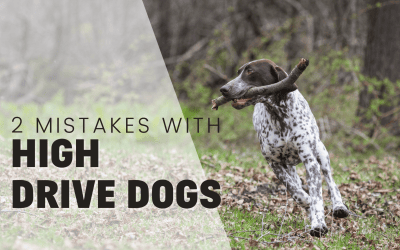
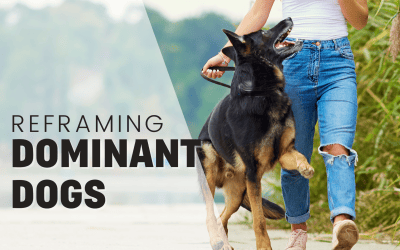
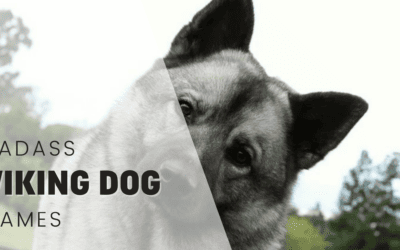
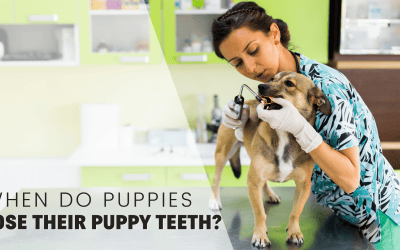
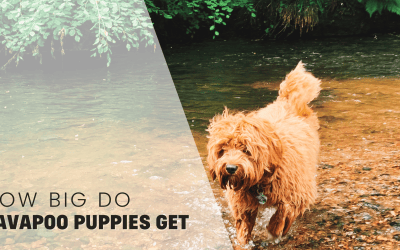
0 Comments